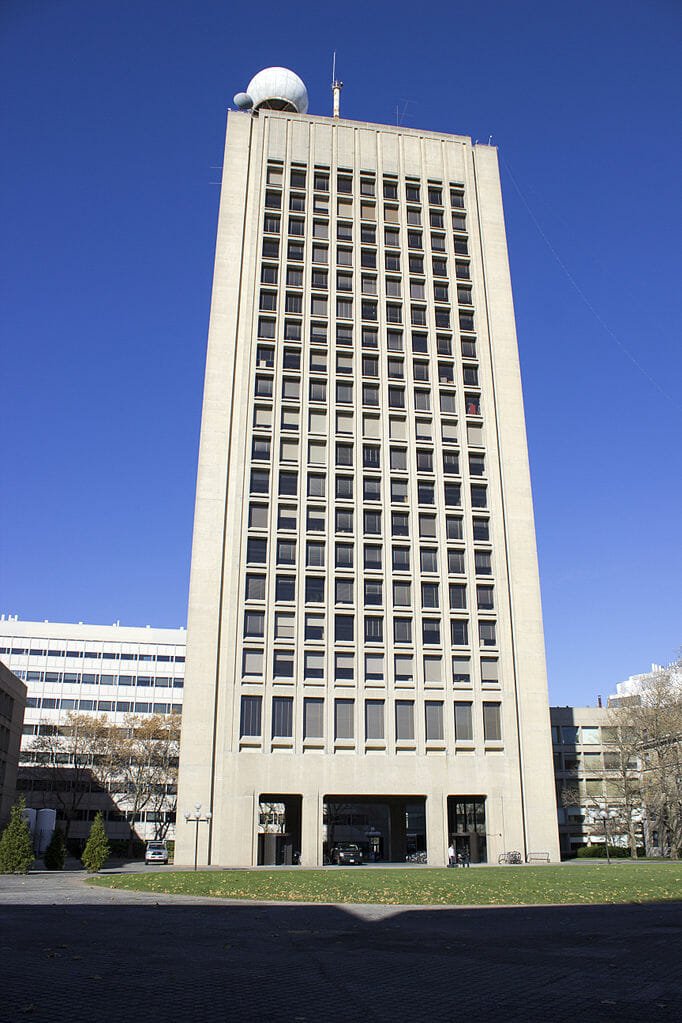News
How door operability problems work

The tallest building in Cambridge, Massachusetts, stands on the campus of the Massachusetts Institute of Technology (MIT). The Cecil and Ida Green Building, a 21-story I. M. Pei design known informally as Building 54, features a prominent open breezeway beneath the first floor, giving observers the impression that the building rests on stilts.
After Building 54 opened in 1964, occupants soon discovered that the exterior hinged doors became virtually unusable on windy days. The problem became so bad that temporary wooden walls were erected to enclose the open space beneath the first floor. Eventually the problematic doors were replaced by revolving doors housed in curious-looking enclosures that also serve as deflectors. Even with the retrofits, successfully entering the Green Building during periods of high wind remains a small victory for MIT students today.
The Green Building offers a classic example of wind-related door operability problems. Doors can become difficult to operate when wind creates an exterior pressure significantly different from the building’s internal pressure. Occupants may have trouble opening or closing doors, and in some cases doors simply won’t move at all.
And who hasn’t seen at least one movie featuring a weary traveler who comes indoors from a violent gale and throws his entire weight against the door to force it shut.
The internal pressure in a nominally sealed building changes, but it does so very slowly. Wind gusts, however, produce external pressures that rise and fall rapidly. These external pressures can be higher or lower than the pressure within the building, and the difference in pressure determines just how easy or difficult opening and closing a door can be.
Such issues are readily predicted and mitigated with a wind tunnel study. In fact, it was a wind tunnel that helped MIT’s researchers understand how to fix the Green Building. And when wind-related issues at the nearby John Hancock Tower—another Pei design—threatened public safety, it was a wind tunnel that helped researchers, including CPP Vice President and MIT graduate Dr. Daryl Boggs, solve the problem.
